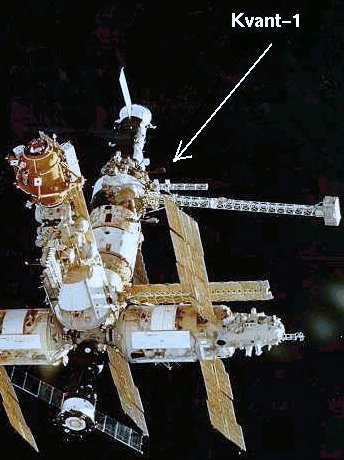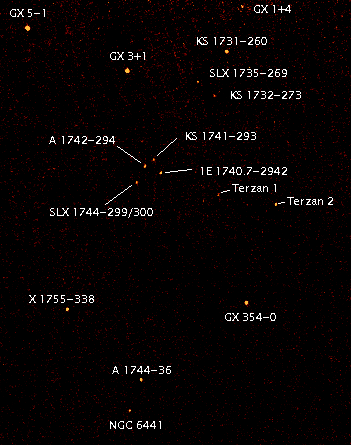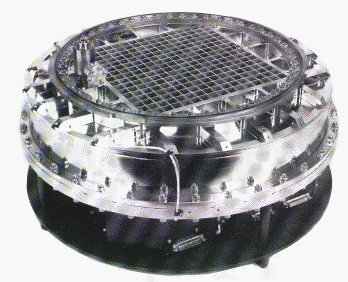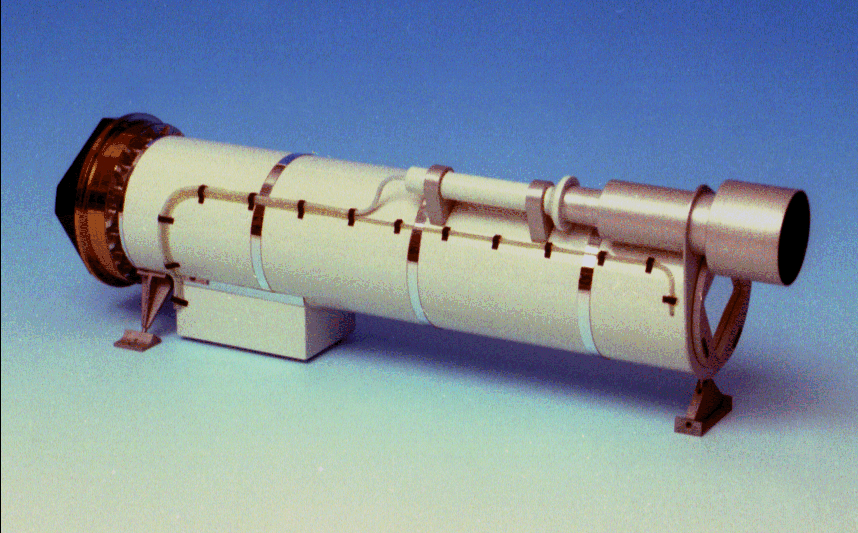



In 1981, Kees de Jager, one of the founders of SRON, was asked by Roald Sagdeev, director of the Space Research Institute (IKI) in Moscow, whether he might have any suggestions for experiments to be included in a new space station. Two years earlier, SRON had started the development of large-area position-sensitive proportional counters, for an application in a coded aperture camera. The prospect for a free ride to the Russian space station, at liberal mass constraints, seemed very attractive for the large detectors.
The project was named “COded Mask Imaging Spectrometer” or COMIS in short. The Space Research Group of the University of Birmingham soon joined the collaboration and the hardware was built by SRON and Birmingham. More specifically, the detector and its electronics were built by SRON, while the coded aperture and star sensor were by the University of Birmingham. The Dutch-English-Soviet collaboration was the first of its kind, and turned out to be very succesful.
The space station was launched in 1986 and named “Mir”. COMIS was part of the first module to the station – called “Kvant” – which was launched in April 1987. This module contained a station attitude control system and an astrophysical observatory called “Roentgen”. It consisted of four experiments that cover the medium and high X-ray regime part of the electromagnetic spectrum between 2 and 800 keV. COMIS was the sole imaging instrument. Observations with COMIS started in June 1987.
A few months later, a malfunction occurred in the high-voltage control of COMIS. No scientific data could be extracted anymore. Despite the fact that COMIS was not built to be repaired in-flight, the Soviets offered to carry out an exchange with the flight spare detector during an extra vehicular activity (EVA). Thus, a repair program was initiated that involved refurbishing and testing the spare flight detector in Utrecht, the design of repair tools in Utrecht, the construction of these tools in Birmingham, the set-up of repair procedures at the cosmonaut training center in Star City and the training of the cosmonauts for the necessary EVA-procedures. A first repair attempt was made on June 30th 1988, but could not be completed. This was achieved during a second EVA on October 20th. Observations started the next day of the Galactic center and showed the repair to be a complete success. The two repairs took 9 hours in total.
In November 1989, observations with Kvant were stopped temporarily because the Mir station was reconfigured with two additional modules, Kvant-2 and Kristall. The on-board activity associated with this change of the station’s configuration lasted almost a full year. An attempt was done in October 1990 to restart the observations again. However, it was soon recognized that slewing the revised station cost too much energy: instead of only using the gyroscopic flywheels, rockets were necessary to aid the re-orientation of the station. This situation was solved in about a year time and operations started again on a reasonably regular basis early 1992.
All four X-ray instruments of the Roentgen observatory were rigidly fixed to Kvant and point towards the same point in the sky. In order to move from one target to another, the entire space station had to be re-oriented. This was accomplished by the use of gyroscopic flywheels. Kvant was provided with 6 of these, two in each of three mutually perpendicular planes. To supply the necessary amount of electric power to the gyros, a third blanket of solar cells was installed.
Scientific objectives
The scientific objectives of COMIS/TTM on the Mir space station were
- monitor selected regions of the sky for cosmic X-ray transient sources
- perform spatially-resolved simultaneous monitoring of compact X-ray sources in crowded fields with high sensitivity
- build up experience in building multi-wire position sensitive proportional counter, in preparation for BeppoSAX
- build up experience in the handling of data from a coded aperture camera, in preparation for BeppoSAX


